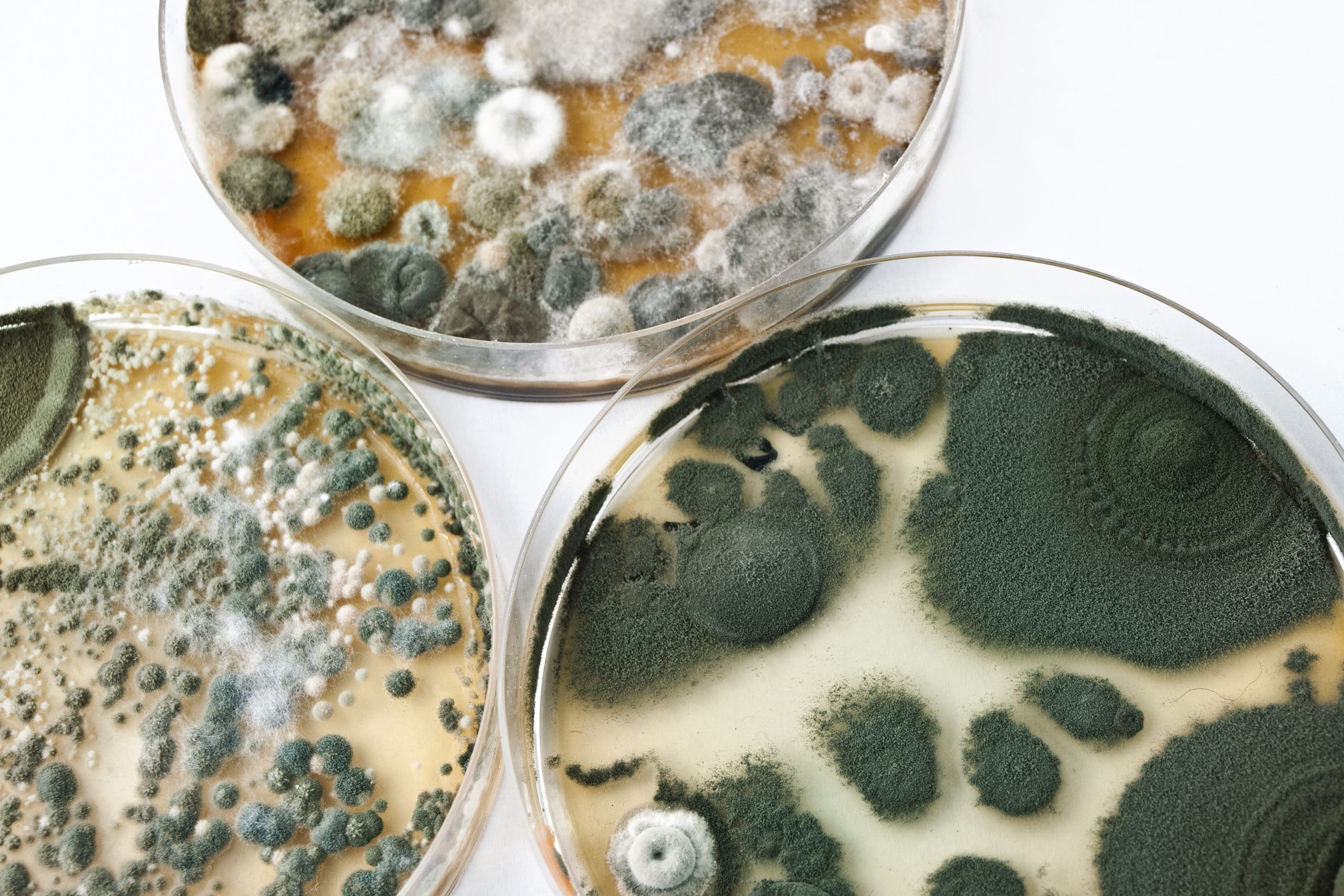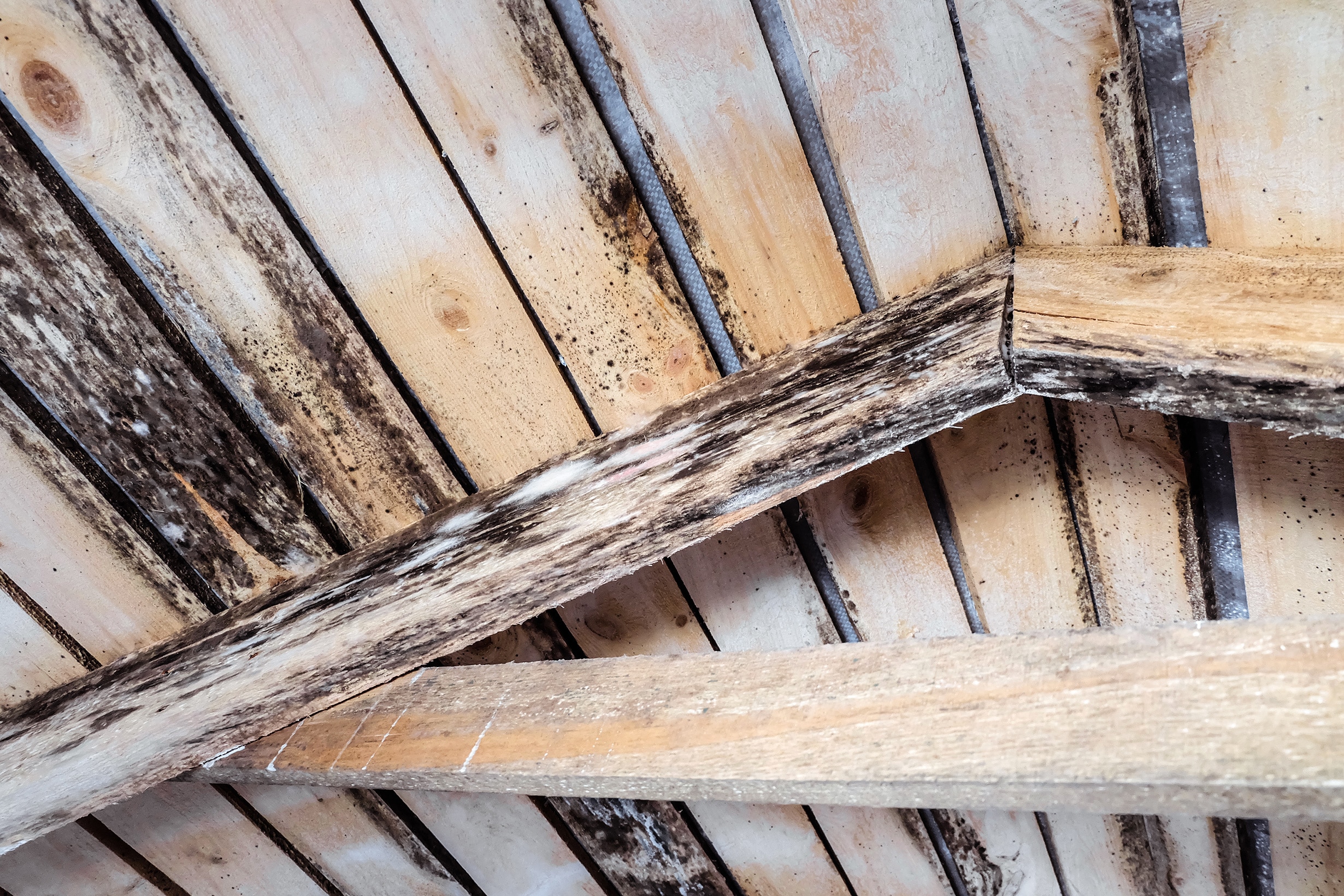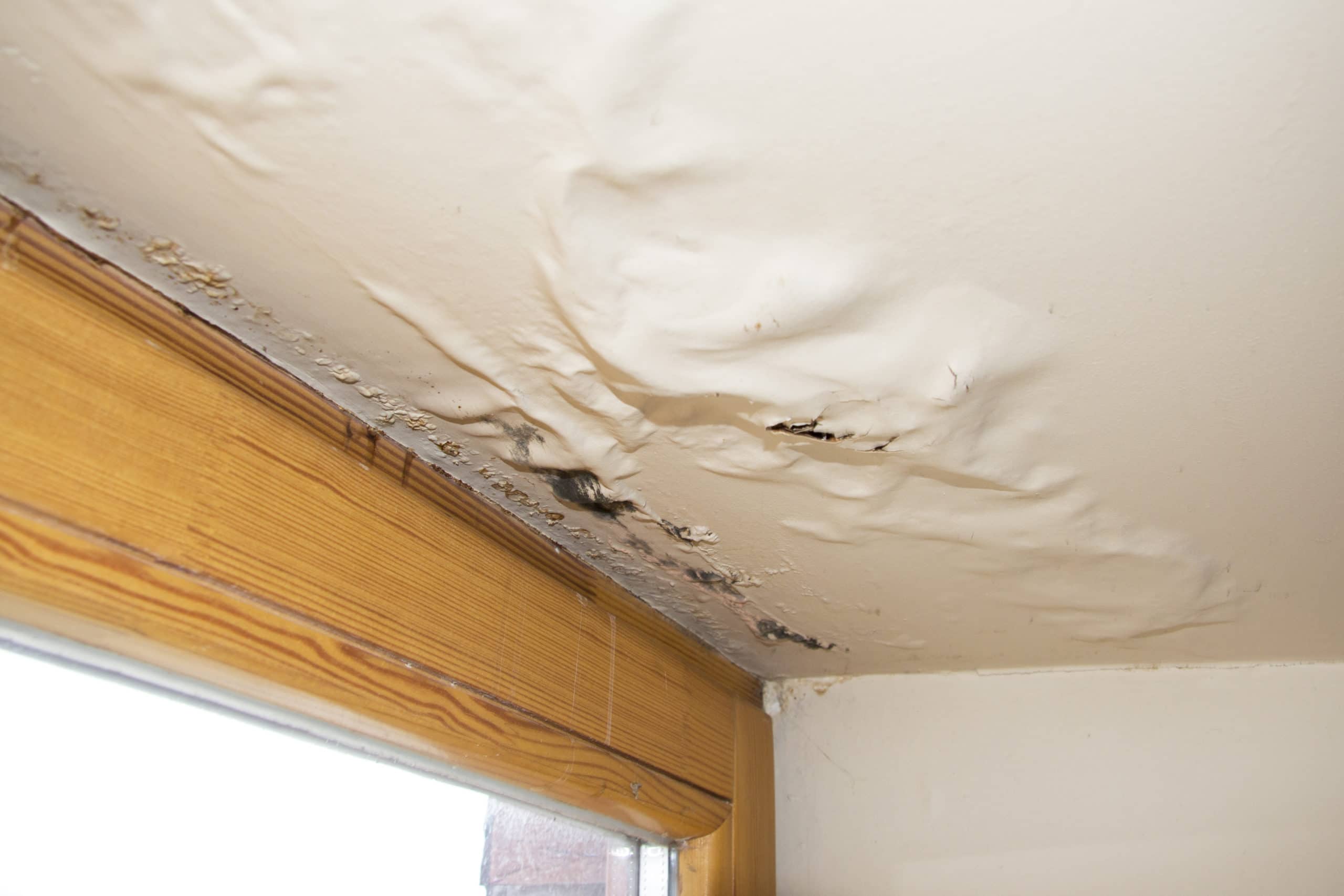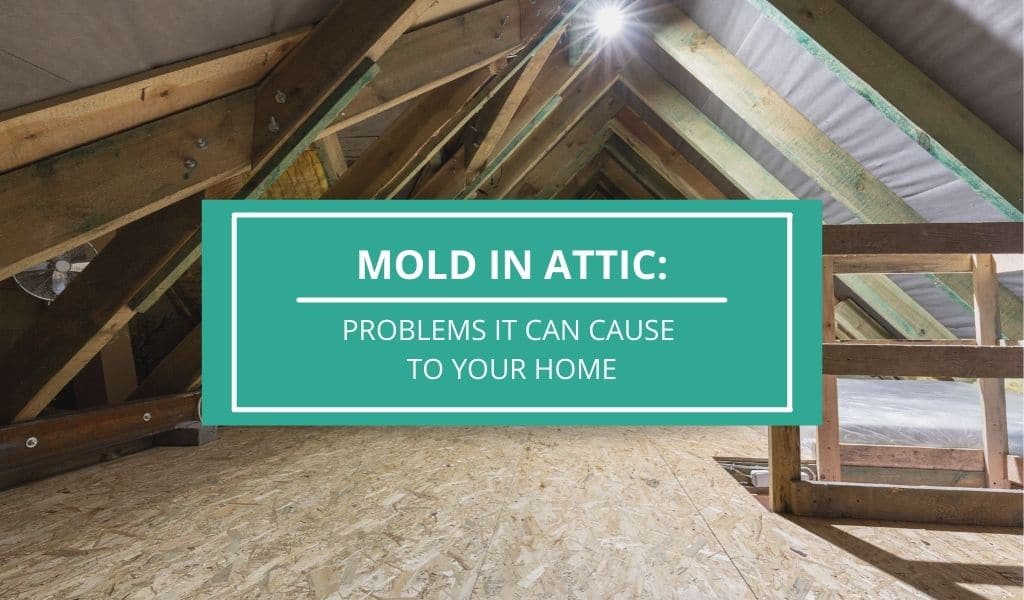It is ideal for every homeowner to check their attic at least twice a year for damage, moisture, and mold. Being proactive about maintenance and repairs can save you from further damages and expenses.
With that being said, homeowners should look out for attic mold as it is one of the most common issues that often go unnoticed. If you fail to treat attic mold it can potentially cause more severe problems to your home. So you need to get up there and take the necessary actions.
In cases when the mold infestation is severe or toxic, you’ll have to call in a licensed contractor to remove it for you, and repair your attic accordingly. But if the mold growth is mild, there are DIY solutions and home remedies in this article that you can try out. The sooner you discover any mold problems in your attic, the higher the possibility that it can be controlled.
Types of Mold Found in the Attic
There are many different types of molds that can be present in your attic. Scientists don’t actually know how many molds exist. Some believe it could be one hundred thousand or more.
Mold is a type of fungus. Generally, you can split the mold types into two categories: toxic attic mold, and non-toxic attic mold. We recommend that the toxic molds be dealt with quickly and with the help of professionals. On the other hand, while non-toxic mold is less less threatening, it should still be examined and cleaned up as well.

Toxic Mold
Harmful molds can be broken down into three different categories: allergenic, pathogenic and toxigenic. Allergenic mold are those that causes allergic reactions from people when inhaled or made contact with. The pathogenic kind, are those that may cause more serious symptoms such as nausea, headaches and other respiratory illness. Lastly, molds categorized as toxigenic are very hazardous and may lead to death.
Here are some of the toxic molds that can be in your attic:
Acremonium and Fusarium are toxigenic types of mold that appears as a fine powdery substance. While Chaetomium and Stachybotrys are pathogenic mold. Stachybotrys chartarum is a common type of black mold
Non-Toxic Mold
Although there are a number of threatening molds, most often than not, what homeowners find in their attic are of the non-toxic kind. Here are some of the common non-toxic molds found in the attic:
Aspergillus mold is a common one that may be hard to spot. Other common types include Aspergillus versicolor, Aspergillus and Penicillium. Alternaria, aspergillus, Trichoderma, Ulocladium, Aureobasidium, Mucor and Cladosporium are common forms of allergenic mold.
Although these molds are relatively less harmful to your health, they still need to be dealt with as they can still damage your home.
Signs of Mold in the Attic
To really be certain whether you have mold in your attic, you’ll need to get up there to have a look, or hire a professional to get up there to look for you. They’ll also have specific equipment, such as moisture meters, to see if there are any unusual conditions in your attic. Nonetheless, here are signs that will help you identify if you indeed have a mold problem.
Visible Mold

Primarily, the best way to verify if you have mold is if you can see it physically. Mold will be a different color than your rafters or insulation, it may be black, grey, or white in color, depending on the type of mold.
If there is mold contamination in some regions of the attic then it may be necessary to remove some portion of the roofing to gain access. If this is the case, it may be the best move to hire a professional to help you.
Moreover, if you are storing items in the attic, also take a look at them. Cardboard boxes, books, papers, and clothing can all display signs of mold contamination. Mold can also stain wood surfaces. If you see dark black staining on the wood, this can indicate mold growth.
Odor
The next sign to look out for is the smell. Do you smell mildew in the attic? This means there could be a moisture issue inside your attic. The last thing you want is that smell getting inside your living space as that would mean the mold issue is severe and may harm other areas of your home.
Moisture Issues

Mold is 100% caused by water damage or moisture in your attic. To start, if you are aware of any water damage issues that you have, you need to get that fixed ASAP or it will eventually lead to mold issues. However, if you're not so sure, here are some parts of your house that may cause water to infiltrate your attic space.
Roof Leak
If it has been pouring hard lately, you might want to check up on your roof structure. This is such an easy access for water to enter your attic and eventually the rest of your house.
Frost Buildup
If there's a frost buildup on the underside of the roof sheathing in the winter. This can lead to water vapor in your attic that can also cause mold to grow.
Moisture on Fixtures
Improper vent or dryer ventilation can also lead to moisture in the attic. If you have this problem, it's easy to spot moisture such as in your lighting fixtures, bathroom fans, or smoke detectors in your home.
When there is water or a high level of moisture in the attic, molds can start growing. These often float naturally through the air but when its exposed to water, it thrives and grows, just like plants do.
Dangers of Having Mold in the Attic
There are instances wherein the mold in the attic stays there and doesn't cause further damage to the rest of the home. However, as a homeowner, do you really want to risk the off chance of this happening?
Decrease Home Value
There are certain types of mold that will stay in your attic and not enter your living space. In these instances, they won’t cause a problem if you do the minimum at stopping the growth.
But, there are types of molds that can get into your HVAC system, or your ductwork, and cause issues inside your home. And it can ultimately affect your house’s resale value and ability to sell quickly.
Health Hazard
The most serious problem with mold is that it can lead to health issues in people. Many people are allergic to mold and mildew. This can be due to toxic or non-toxic types of mold. Mold can cause issues in the lungs that lead to breathing issues and other problems in the body such as asthma or pneumonia.
Unfortunately, many people may discover they have these issues and then find out they started in the attic. That’s why it’s best to act early before it causes health issues, even if you have a non-toxic mold growing in your home.
Getting Rid of Attic Mold by Yourself
There are cases when removing mold can be done safely without the help of professional, such as when the case of mold is mild and non-toxic. If you decide to do it yourself, here are the steps:
Step 1
Implement Safety Measures
You need to be cautious of the hazards of cleaning your attic. First of all, the mold infestation may have affected the integrity of the structure of your attic. For one, a floor joist could fail so just be cautious. Also, even if you're dealing with non-toxic mold, it's still not safe to breathe in mold spores. So make it a point to wear protective gear before cleaning your attic.
Step 2
Proceed with Removing the Mold
You can buy anti-fungicides at any home improvement store. These will be sprayed over every surface in your attic, top to bottom, and all walls. You may have to recheck and do it again a second time, but once mold growth has stopped, your attic should be fine
If you have items in your attic, such as photographs, carpets, furniture, papers, cloth, etc., these should all be removed and disposed of, particularly if mold has been found on them.
Step 3
Solve Moisture Problems
As discussed, the main cause of mold is moisture or water problems. Thus, once the mold and the affected surfaces are cleaned and removed, the next necessary step is to solve what caused it in the first place. You may want to install fan or vents in your attic to regulate the climate up there to avoid moisture.
Step 4
Finishing Touches
When the cleaning is done with, you may wish to repaint any surfaces that have been destroyed by mold. And enforce any measure you may wish to prevent the reoccurrence of mold infestation in your attic.
Getting Rid of Attic Mold Professionally
If your problem is severe, you definitely have to hire a professional to do it for you. First, they'll inspect your attic and test what kind of specific mold is present. After so, they'll proceed with the specific treatment that needs to be done to remove the mold and stop it from reoccurring.
A professional mold remediation company can go far beyond what you can do yourself. They’ll adhere to strict industry guidelines in dealing with the mold. It starts with powerful cleaning agents that not only remove the mold from your attic, but that also prevent it. An anti-fungal agent can be applied that will prevent mold growth in the future.
WHEN TO hire Professionals
Another treatment than you can avail to treat this problem is through abrasive blasting. This can be more expensive than the usual treatment but this one is more effective. The top layer of all wood in your attic is blasted off with a combination of dry ice, soda ash, and sand. This is quite loud and labor intensive.
Your attic will also be dried out, to remove any moisture in there. HEPA air filters and air purifiers with anti-humidifiers may be used until the mold problem is eradicated.
Hiring a professional is ideal because then you are sure that the work is done properly and you will be at ease of any mold problem reoccurring.
Ways to Prevent Mold in the Attic
The mold remediation instructions above are a waste of effort and time if the problem is going to just happen again. So to make sure that it would be the last time that you'll have to deal with mold. Here are some of the precautionary measures you'll have to do:
Final Thoughts
If you’re ready to deal with the mold in your attic, we suggest you get started ASAP. If you’re lucky, it will be a small section of harmless mold you can clean up yourself. But if it’s extensive, we recommend that you hire a professional.
There are a lot of licensed contractors ready to help you out. So don't get too worried if you have a sever case of mold infestation, it can be remedied. Soon your mold problem will be gone and you and your family can go back to living a happy and healthy life.

